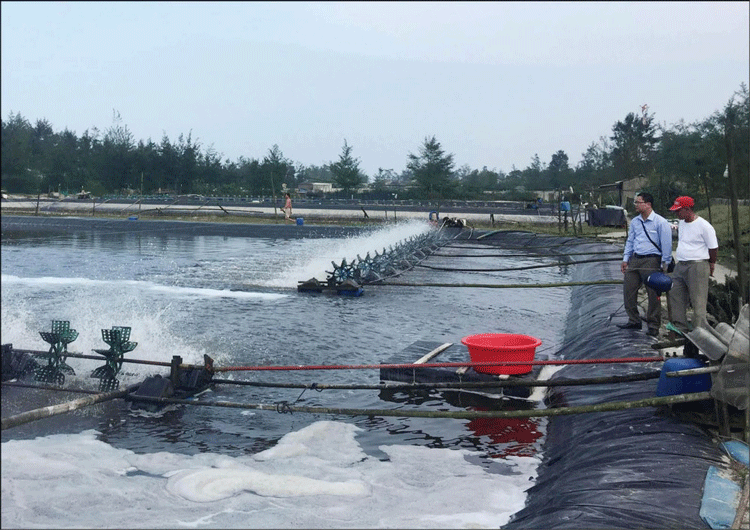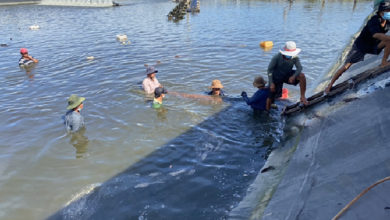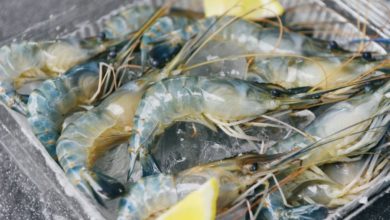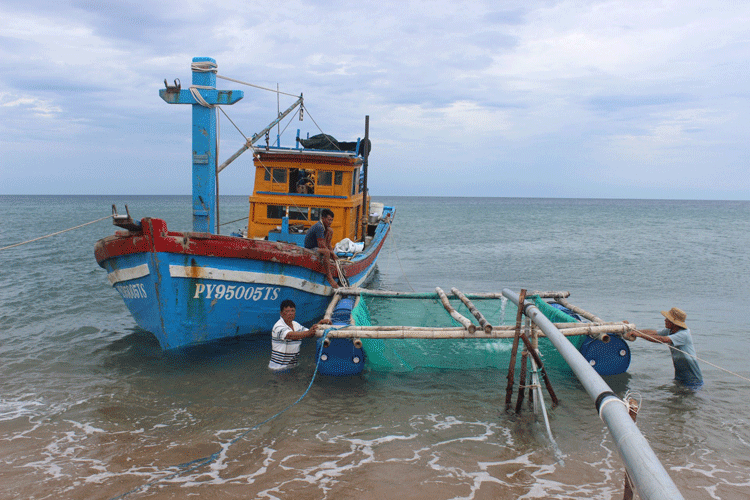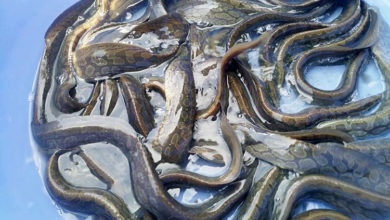Bac Lieu strives to overcome challenges in high-tech shrimp farming
The development and expansion of high-tech shrimp farming models in Bac Lieu continue to face numerous challenges and have yet to achieve the desired goals.
Feed costs reduce profits
Bạc Liêu has over 132,660 hectares of shrimp farms, including five high-tech farming zones spanning 3,900 hectares, mainly in Bac Lieu City, Hoa Binh District, and Dong Hai District. These zones employ super-intensive, intensive, and semi-intensive farming models, integrating water-saving technologies and biosecurity measures to minimize environmental impact and prevent disease outbreaks. The province is home to 25 organizations and 984 households practicing super-intensive two- to three-phase whiteleg shrimp farming, covering over 7,360 hectares. These farms produce more than 123,530 tons of shrimp annually, accounting for 40.5% of the province’s total shrimp output.
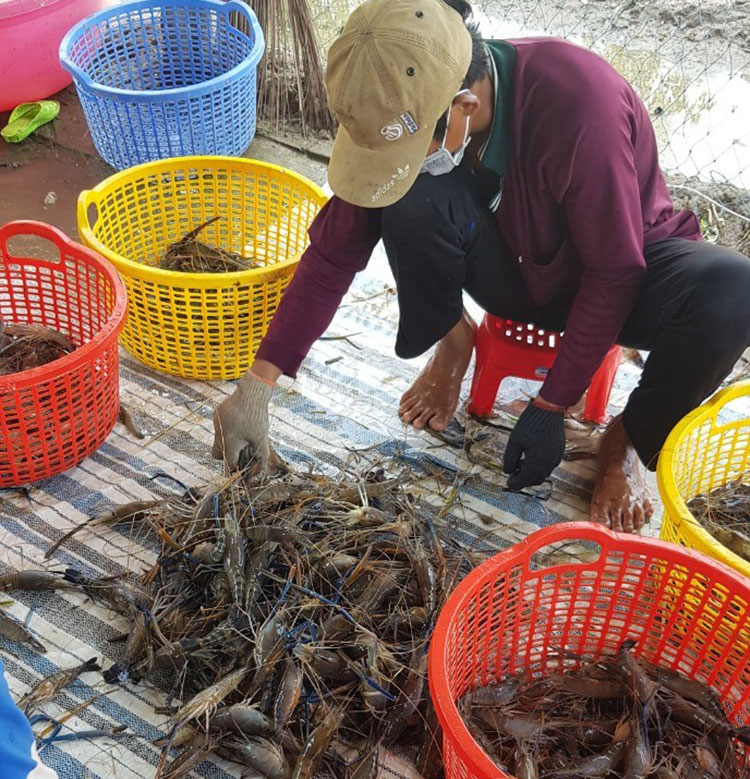
The high-tech shrimp farming model is a key driver of the industry’s growth, directly influencing export turnover and the economic targets for 2025. Speaking at the shrimp industry conference in Bac Lieu, Deputy Minister of Agriculture and Rural Development Phung Duc Tien stressed that without breakthrough solutions, the industry will struggle to reach an export turnover of USD 5–6 billion by 2030 due to high costs and low competitiveness.
Bac Lieu is embracing high-tech aquaculture, where farms and cooperatives must minimize variable costs and depreciation. According to Tran Thanh Trieu, owner of a 10-hectare high-tech shrimp farm in Long Dien Commune, Dong Hai District, technology adoption varies by investment level. Many farms use pond liners, automated feeding systems with sensors, and water quality monitoring devices. Larger operations may invest in recirculating aquaculture systems (RAS) to improve water reuse, quality control, and environmental sustainability or adopt Biofloc technology to break down organic matter and reduce water changes. Beyond technology, standardizing farming models is essential for cutting costs, enhancing efficiency, and boosting profitability.
Trieu stated that purchasing feed directly from the factory could cut costs by 50%. However, due to limited capital, he relies on deferred payments through intermediaries, significantly increasing shrimp production costs. For example, shrimp at 100 pieces per kilogram cost 80,000–100,000 VND/kg, which is 20,000 VND/kg more than if feed were bought directly.
Ta Hoang Nhiem, Chairman of the Bac Lieu Shrimp Association, noted that 40% protein feed costs 40,000 VND/kg through dealers, while direct factory purchases cost only 27,000–28,000 VND/kg, a difference of 12–13 million VND per ton. For a 12,000m² farm, this adds up to an extra 700 million VND per crop when buying through dealers.
The three main challenges in high-tech shrimp farming are investment capital, production linkages, and feed costs. High investment and intermediary expenses reduce profits, leading to debt and, in some cases, forcing farmers to sell their land if they fail. This is particularly true for those with limited capital who depend on agricultural supply agents.
How to cut costs effectively?
Dr. Tran Huu Loc, founder and operator of EcoSeafood Group Co., Ltd. and lecturer at the Faculty of Fisheries, Nong Lam University in Ho Chi Minh City, stated: “The current high-tech shrimp farming model faces challenges due to high costs, making scaling up risky and difficult.” To address this issue, EcoSeafood Group has developed E.S.G Farm, a 30-hectare facility with 40 farming ponds, nursery ponds, a wastewater treatment system, a 2 km water intake pipeline, and 30% of the area dedicated to afforestation. This model helps reduce both production costs and depreciation.
Large-scale farming enables direct factory purchases at lower prices, cutting feed costs from 40,000 to 20,000–22,000 VND/kg. Extending the project lifespan to 10 years also reduces depreciation and break-even volume. Consequently, farmers don’t need to adopt high stocking densities like other high-tech farms in Bac Lieu and the Mekong Delta.
According to Le Van Quang, Chairman of Minh Phu Seafood Corporation, Vietnam’s shrimp production costs are too high, making it hard to compete with Ecuador and India. In Ecuador, shrimp at 30–35 shrimp/kg costs just USD 2.6/kg, significantly lower than in Vietnam. Vietnam’s shrimp exports thrive mainly due to processed products, while raw shrimp is primarily sourced from Ecuador and India. As a result, the export value of Vietnamese shrimp has remained around USD 4 billion for many years.
According to Tran Thuy Que Phuong (VASEP), reducing production costs is crucial for Vietnamese shrimp to expand its market share. This requires scaling up efficient farming models, establishing large-scale production linkages, integrating into supply chains, and securing financing. Farmers must adopt a business-oriented mindset and collaborate under models that combine land, capital, and management expertise. If hundreds of thousands of small-scale shrimp farmers consolidate into a few thousand large, internationally certified farms with traceability, the industry can achieve sustainable growth.
Luu Hoang Ly, Director of the Department of Agriculture and Natural Resources, stated that the province’s agricultural sector is prioritizing high-tech shrimp farming, particularly super-intensive models, as directed by the Provincial People’s Committee. Support measures are being implemented, with a focus on dredging canals south of National Highway 1A to ensure proper water supply and drainage for aquaculture. The sector is also enhancing inspections, addressing fisheries violations, and regulating the quality of shrimp seed, feed, and veterinary drugs to prevent disease outbreaks. Additionally, the province is finalizing the Bac Lieu high-tech agricultural zone for shrimp development and promoting the “Organic shrimp of Bac Lieu” brand.
VFM


